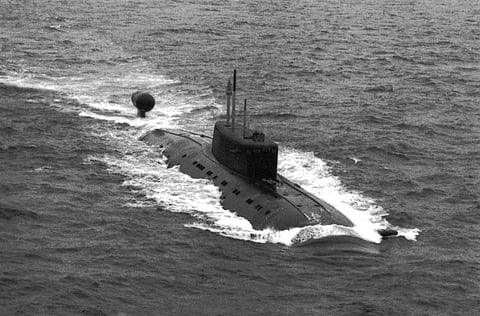

The largest deployment of Russian submarines since the end of the Cold War has set the alarm bells ringing in NATO headquarters.
According to media reports, quoting Norway's National Intelligence Service, in late October, 10 Russian subs, eight of them nuclear-powered, left the port of Murmansk.
Six of the boats have commenced defensive exercises, and weapon testing, in an area which includes the Greenland Sea, the Barents Sea and the Norwegian Sea. The remaining four submarines have transited the Greenland-Iceland-UK (GIUK) Gap, and entered the Atlantic.
The reports said that the deployment includes a pair of nuclear powered, titanium-hulled Sierra II-class subs, Nizhny Novgorod and Paskov. These two boats are carrying out test firings in the Norwegian Sea, probably of a new version of the Kalibr land attack cruise missile.
It is likely that Moscow is emphasising that it can carry out, simultaneously, various types of underwater operations in time of war. These are the penetration of the GIUK Gap, in order to reach the Atlantic to launch intercontinental ballistic missiles towards the East coast of the USA; to operate intensively against NATO forces in sea areas nearer to Russia; and to protect both Russia's naval bases on the coast of the Barents Sea, and the burgeoning numbers of strategically important Russian aviation and maritime support facilities in the Arctic.
Some analysts believe that Russia is also signalling a re-calibration of its submarine operations, following several years of emphasis upon Middle Eastern and Asian waters.
NATO assets being used to track these latest Russian submarine evolutions include the seabed-mounted sound surveillance system in the GIUK Gap, maritime patrol aircraft, surface warships, and, very likely, British, French and US nuclear-powered attack submarines.
